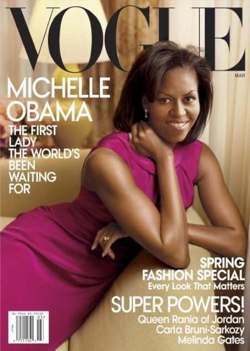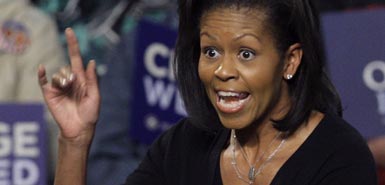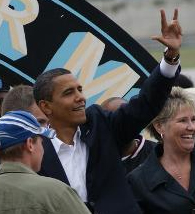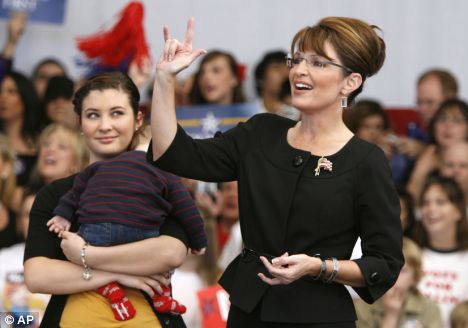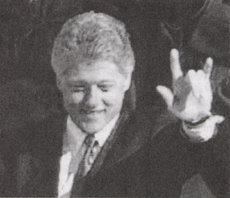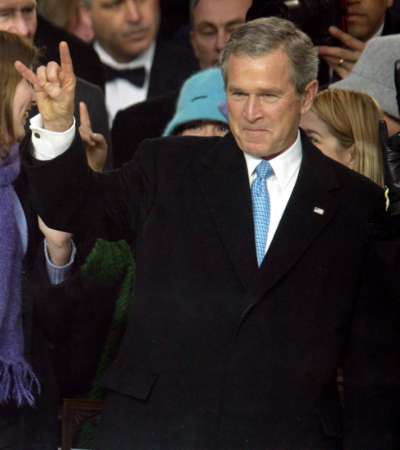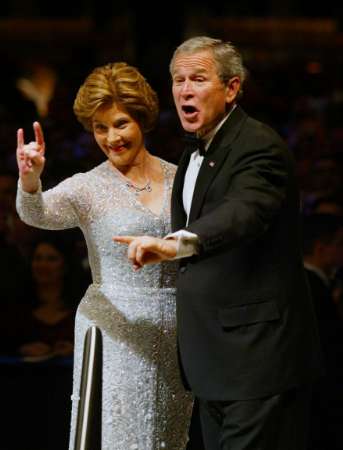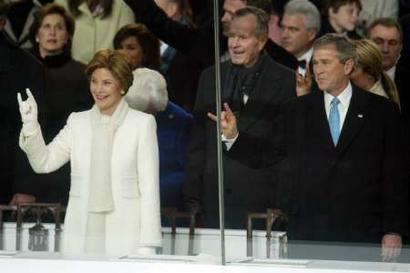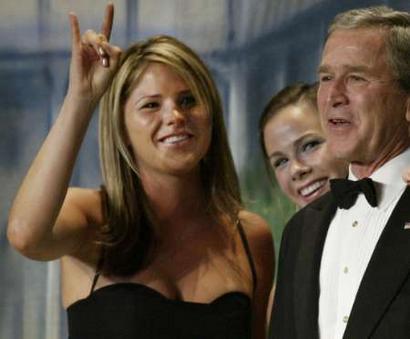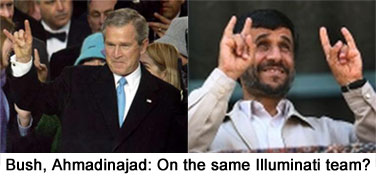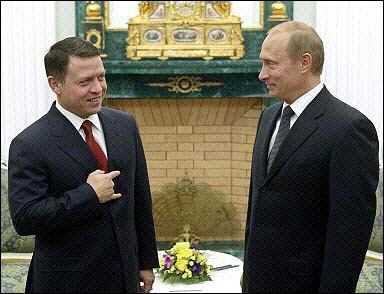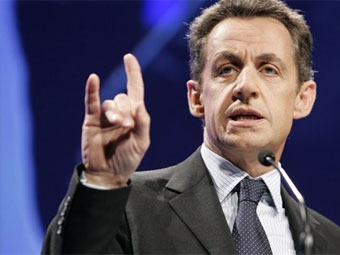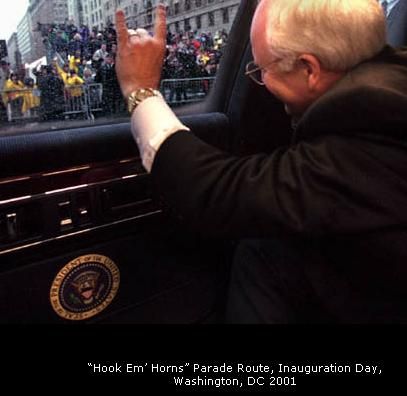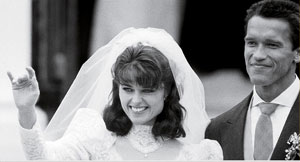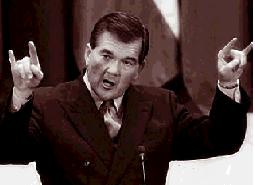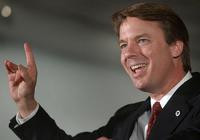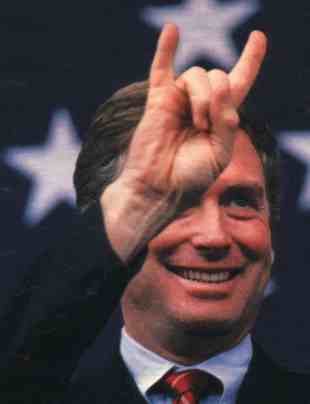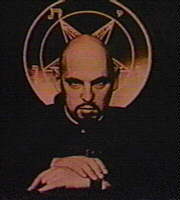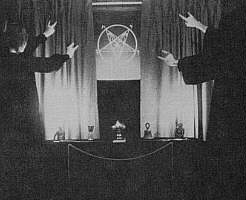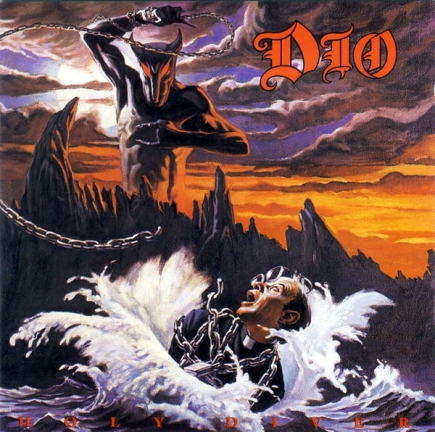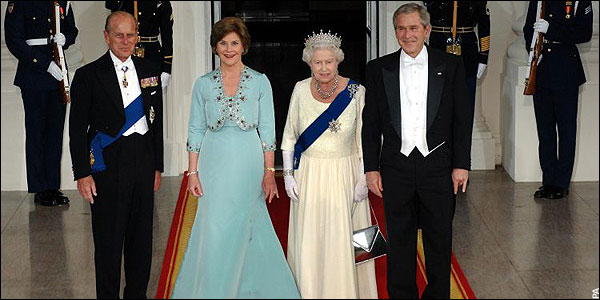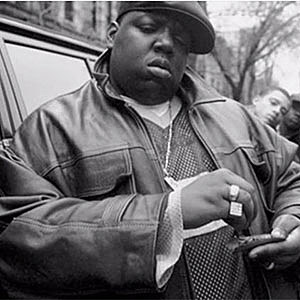According to the prevailing wisdom in the West, the Ukraine crisis can be blamed almost entirely on Russian aggression. Russian President Vladimir Putin, the argument goes, annexed Crimea out of a long-standing desire to resuscitate the Soviet empire, and he may eventually go after the rest of Ukraine, as well as other countries in eastern Europe. In this view, the ouster of Ukrainian President Viktor Yanukovych in February 2014 merely provided a pretext for Putin’s decision to order Russian forces to seize part of Ukraine.
But this account is wrong: the United States and its European allies share most of the responsibility for the crisis. The taproot of the trouble is NATO enlargement, the central element of a larger strategy to move Ukraine out of Russia’s orbit and integrate it into the West. At the same time, the EU’s expansion eastward and the West’s backing of the pro-democracy movement in Ukraine -- beginning with the Orange Revolution in 2004 -- were critical elements, too. Since the mid-1990s, Russian leaders have adamantly opposed NATO enlargement, and in recent years, they have made it clear that they would not stand by while their strategically important neighbor turned into a Western bastion. For Putin, the illegal overthrow of Ukraine’s democratically elected and pro-Russian president -- which he rightly labeled a “coup” -- was the final straw. He responded by taking Crimea, a peninsula he feared would host a NATO naval base, and working to destabilize Ukraine until it abandoned its efforts to join the West.
Putin’s pushback should have come as no surprise. After all, the West had been moving into Russia’s backyard and threatening its core strategic interests, a point Putin made emphatically and repeatedly. Elites in the United States and Europe have been blindsided by events only because they subscribe to a flawed view of international politics. They tend to believe that the logic of realism holds little relevance in the twenty-first century and that Europe can be kept whole and free on the basis of such liberal principles as the rule of law, economic interdependence, and democracy.
But this grand scheme went awry in Ukraine. The crisis there shows that realpolitik remains relevant -- and states that ignore it do so at their own peril. U.S. and European leaders blundered in attempting to turn Ukraine into a Western stronghold on Russia’s border. Now that the consequences have been laid bare, it would be an even greater mistake to continue this misbegotten policy.
U.S. and European leaders blundered in attempting to turn Ukraine into a Western stronghold on Russia’s border.THE WESTERN AFFRONT
As the Cold War came to a close, Soviet leaders preferred that U.S. forces remain in Europe and NATO stay intact, an arrangement they thought would keep a reunified Germany pacified. But they and their Russian successors did not want NATO to grow any larger and assumed that Western diplomats understood their concerns. The Clinton administration evidently thought otherwise, and in the mid-1990s, it began pushing for NATO to expand.
The first round of enlargement took place in 1999 and brought in the Czech Republic, Hungary, and Poland. The second occurred in 2004; it included Bulgaria, Estonia, Latvia, Lithuania, Romania, Slovakia, and Slovenia. Moscow complained bitterly from the start. During NATO’s 1995 bombing campaign against the Bosnian Serbs, for example, Russian President Boris Yeltsin said, “This is the first sign of what could happen when NATO comes right up to the Russian Federation’s borders. ... The flame of war could burst out across the whole of Europe.” But the Russians were too weak at the time to derail NATO’s eastward movement -- which, at any rate, did not look so threatening, since none of the new members shared a border with Russia, save for the tiny Baltic countries.
Then NATO began looking further east. At its April 2008 summit in Bucharest, the alliance considered admitting Georgia and Ukraine. The George W. Bush administration supported doing so, but France and Germany opposed the move for fear that it would unduly antagonize Russia. In the end, NATO’s members reached a compromise: the alliance did not begin the formal process leading to membership, but it issued a statement endorsing the aspirations of Georgia and Ukraine and boldly declaring, “These countries will become members of NATO.”
Moscow, however, did not see the outcome as much of a compromise. Alexander Grushko, then Russia’s deputy foreign minister, said, “Georgia’s and Ukraine’s membership in the alliance is a huge strategic mistake which would have most serious consequences for pan-European security.” Putin maintained that admitting those two countries to NATO would represent a “direct threat” to Russia. One Russian newspaper reported that Putin, while speaking with Bush, “very transparently hinted that if Ukraine was accepted into NATO, it would cease to exist.”
Russia’s invasion of Georgia in August 2008 should have dispelled any remaining doubts about Putin’s determination to prevent Georgia and Ukraine from joining NATO. Georgian President Mikheil Saakashvili, who was deeply committed to bringing his country into NATO, had decided in the summer of 2008 to reincorporate two separatist regions, Abkhazia and South Ossetia. But Putin sought to keep Georgia weak and divided -- and out of NATO. After fighting broke out between the Georgian government and South Ossetian separatists, Russian forces took control of Abkhazia and South Ossetia. Moscow had made its point. Yet despite this clear warning, NATO never publicly abandoned its goal of bringing Georgia and Ukraine into the alliance. And NATO expansion continued marching forward, with Albania and Croatia becoming members in 2009.
The EU, too, has been marching eastward. In May 2008, it unveiled its Eastern Partnership initiative, a program to foster prosperity in such countries as Ukraine and integrate them into the EU economy. Not surprisingly, Russian leaders view the plan as hostile to their country’s interests. This past February, before Yanukovych was forced from office, Russian Foreign Minister Sergey Lavrov accused the EU of trying to create a “sphere of influence” in eastern Europe. In the eyes of Russian leaders, EU expansion is a stalking horse for NATO expansion.
The West’s final tool for peeling Kiev away from Moscow has been its efforts to spread Western values and promote democracy in Ukraine and other post-Soviet states, a plan that often entails funding pro-Western individuals and organizations. Victoria Nuland, the U.S. assistant secretary of state for European and Eurasian affairs, estimated in December 2013 that the United States had invested more than $5 billion since 1991 to help Ukraine achieve “the future it deserves.” As part of that effort, the U.S. government has bankrolled the National Endowment for Democracy. The nonprofit foundation has funded more than 60 projects aimed at promoting civil society in Ukraine, and the NED’s president, Carl Gershman, has called that country “the biggest prize.” After Yanukovych won Ukraine’s presidential election in February 2010, the NED decided he was undermining its goals, and so it stepped up its efforts to support the opposition and strengthen the country’s democratic institutions.
When Russian leaders look at Western social engineering in Ukraine, they worry that their country might be next. And such fears are hardly groundless. In September 2013, Gershman wrote in The Washington Post, “Ukraine’s choice to join Europe will accelerate the demise of the ideology of Russian imperialism that Putin represents.” He added: “Russians, too, face a choice, and Putin may find himself on the losing end not just in the near abroad but within Russia itself.”
CREATING A CRISIS
Imagine the American outrage if China built an impressive military alliance and tried to include Canada and Mexico.The West’s triple package of policies -- NATO enlargement, EU expansion, and democracy promotion -- added fuel to a fire waiting to ignite. The spark came in November 2013, when Yanukovych rejected a major economic deal he had been negotiating with the EU and decided to accept a $15 billion Russian counteroffer instead. That decision gave rise to antigovernment demonstrations that escalated over the following three months and that by mid-February had led to the deaths of some one hundred protesters. Western emissaries hurriedly flew to Kiev to resolve the crisis. On February 21, the government and the opposition struck a deal that allowed Yanukovych to stay in power until new elections were held. But it immediately fell apart, and Yanukovych fled to Russia the next day. The new government in Kiev was pro-Western and anti-Russian to the core, and it contained four high-ranking members who could legitimately be labeled neofascists.
Although the full extent of U.S. involvement has not yet come to light, it is clear that Washington backed the coup. Nuland and Republican Senator John McCain participated in antigovernment demonstrations, and Geoffrey Pyatt, the U.S. ambassador to Ukraine, proclaimed after Yanukovych’s toppling that it was “a day for the history books.” As a leaked telephone recording revealed, Nuland had advocated regime change and wanted the Ukrainian politician Arseniy Yatsenyuk to become prime minister in the new government, which he did. No wonder Russians of all persuasions think the West played a role in Yanukovych’s ouster.
For Putin, the time to act against Ukraine and the West had arrived. Shortly after February 22, he ordered Russian forces to take Crimea from Ukraine, and soon after that, he incorporated it into Russia. The task proved relatively easy, thanks to the thousands of Russian troops already stationed at a naval base in the Crimean port of Sevastopol. Crimea also made for an easy target since ethnic Russians compose roughly 60 percent of its population. Most of them wanted out of Ukraine.
Next, Putin put massive pressure on the new government in Kiev to discourage it from siding with the West against Moscow, making it clear that he would wreck Ukraine as a functioning state before he would allow it to become a Western stronghold on Russia’s doorstep. Toward that end, he has provided advisers, arms, and diplomatic support to the Russian separatists in eastern Ukraine, who are pushing the country toward civil war. He has massed a large army on the Ukrainian border, threatening to invade if the government cracks down on the rebels. And he has sharply raised the price of the natural gas Russia sells to Ukraine and demanded payment for past exports. Putin is playing hardball.
THE DIAGNOSIS
Putin’s actions should be easy to comprehend. A huge expanse of flat land that Napoleonic France, imperial Germany, and Nazi Germany all crossed to strike at Russia itself, Ukraine serves as a buffer state of enormous strategic importance to Russia. No Russian leader would tolerate a military alliance that was Moscow’s mortal enemy until recently moving into Ukraine. Nor would any Russian leader stand idly by while the West helped install a government there that was determined to integrate Ukraine into the West.
Washington may not like Moscow’s position, but it should understand the logic behind it. This is Geopolitics 101: great powers are always sensitive to potential threats near their home territory. After all, the United States does not tolerate distant great powers deploying military forces anywhere in the Western Hemisphere, much less on its borders. Imagine the outrage in Washington if China built an impressive military alliance and tried to include Canada and Mexico in it. Logic aside, Russian leaders have told their Western counterparts on many occasions that they consider NATO expansion into Georgia and Ukraine unacceptable, along with any effort to turn those countries against Russia -- a message that the 2008 Russian-Georgian war also made crystal clear.
Officials from the United States and its European allies contend that they tried hard to assuage Russian fears and that Moscow should understand that NATO has no designs on Russia. In addition to continually denying that its expansion was aimed at containing Russia, the alliance has never permanently deployed military forces in its new member states. In 2002, it even created a body called the NATO-Russia Council in an effort to foster cooperation. To further mollify Russia, the United States announced in 2009 that it would deploy its new missile defense system on warships in European waters, at least initially, rather than on Czech or Polish territory. But none of these measures worked; the Russians remained steadfastly opposed to NATO enlargement, especially into Georgia and Ukraine. And it is the Russians, not the West, who ultimately get to decide what counts as a threat to them.
To understand why the West, especially the United States, failed to understand that its Ukraine policy was laying the groundwork for a major clash with Russia, one must go back to the mid-1990s, when the Clinton administration began advocating NATO expansion. Pundits advanced a variety of arguments for and against enlargement, but there was no consensus on what to do. Most eastern European émigrés in the United States and their relatives, for example, strongly supported expansion, because they wanted NATO to protect such countries as Hungary and Poland. A few realists also favored the policy because they thought Russia still needed to be contained.
But most realists opposed expansion, in the belief that a declining great power with an aging population and a one-dimensional economy did not in fact need to be contained. And they feared that enlargement would only give Moscow an incentive to cause trouble in eastern Europe. The U.S. diplomat George Kennan articulated this perspective in a 1998 interview, shortly after the U.S. Senate approved the first round of NATO expansion. “I think the Russians will gradually react quite adversely and it will affect their policies,” he said. “I think it is a tragic mistake. There was no reason for this whatsoever. No one was threatening anyone else.”
The United States and its allies should abandon their plan to westernize Ukraine and instead aim to make it a neutral buffer.Most liberals, on the other hand, favored enlargement, including many key members of the Clinton administration. They believed that the end of the Cold War had fundamentally transformed international politics and that a new, postnational order had replaced the realist logic that used to govern Europe. The United States was not only the “indispensable nation,” as Secretary of State Madeleine Albright put it; it was also a benign hegemon and thus unlikely to be viewed as a threat in Moscow. The aim, in essence, was to make the entire continent look like western Europe.
And so the United States and its allies sought to promote democracy in the countries of eastern Europe, increase economic interdependence among them, and embed them in international institutions. Having won the debate in the United States, liberals had little difficulty convincing their European allies to support NATO enlargement. After all, given the EU’s past achievements, Europeans were even more wedded than Americans to the idea that geopolitics no longer mattered and that an all-inclusive liberal order could maintain peace in Europe.
So thoroughly did liberals come to dominate the discourse about European security during the first decade of this century that even as the alliance adopted an open-door policy of growth, NATO expansion faced little realist opposition. The liberal worldview is now accepted dogma among U.S. officials. In March, for example, President Barack Obama delivered a speech about Ukraine in which he talked repeatedly about “the ideals” that motivate Western policy and how those ideals “have often been threatened by an older, more traditional view of power.” Secretary of State John Kerry’s response to the Crimea crisis reflected this same perspective: “You just don’t in the twenty-first century behave in nineteenth-century fashion by invading another country on completely trumped-up pretext.”
In essence, the two sides have been operating with different playbooks: Putin and his compatriots have been thinking and acting according to realist dictates, whereas their Western counterparts have been adhering to liberal ideas about international politics. The result is that the United States and its allies unknowingly provoked a major crisis over Ukraine.
BLAME GAME
In that same 1998 interview, Kennan predicted that NATO expansion would provoke a crisis, after which the proponents of expansion would “say that we always told you that is how the Russians are.” As if on cue, most Western officials have portrayed Putin as the real culprit in the Ukraine predicament. In March, according to The New York Times, German Chancellor Angela Merkel implied that Putin was irrational, telling Obama that he was “in another world.” Although Putin no doubt has autocratic tendencies, no evidence supports the charge that he is mentally unbalanced. On the contrary: he is a first-class strategist who should be feared and respected by anyone challenging him on foreign policy.
Other analysts allege, more plausibly, that Putin regrets the demise of the Soviet Union and is determined to reverse it by expanding Russia’s borders. According to this interpretation, Putin, having taken Crimea, is now testing the waters to see if the time is right to conquer Ukraine, or at least its eastern part, and he will eventually behave aggressively toward other countries in Russia’s neighborhood. For some in this camp, Putin represents a modern-day Adolf Hitler, and striking any kind of deal with him would repeat the mistake of Munich. Thus, NATO must admit Georgia and Ukraine to contain Russia before it dominates its neighbors and threatens western Europe.
This argument falls apart on close inspection. If Putin were committed to creating a greater Russia, signs of his intentions would almost certainly have arisen before February 22. But there is virtually no evidence that he was bent on taking Crimea, much less any other territory in Ukraine, before that date. Even Western leaders who supported NATO expansion were not doing so out of a fear that Russia was about to use military force. Putin’s actions in Crimea took them by complete surprise and appear to have been a spontaneous reaction to Yanukovych’s ouster. Right afterward, even Putin said he opposed Crimean secession, before quickly changing his mind.
Besides, even if it wanted to, Russia lacks the capability to easily conquer and annex eastern Ukraine, much less the entire country. Roughly 15 million people -- one-third of Ukraine’s population -- live between the Dnieper River, which bisects the country, and the Russian border. An overwhelming majority of those people want to remain part of Ukraine and would surely resist a Russian occupation. Furthermore, Russia’s mediocre army, which shows few signs of turning into a modern Wehrmacht, would have little chance of pacifying all of Ukraine. Moscow is also poorly positioned to pay for a costly occupation; its weak economy would suffer even more in the face of the resulting sanctions.
But even if Russia did boast a powerful military machine and an impressive economy, it would still probably prove unable to successfully occupy Ukraine. One need only consider the Soviet and U.S. experiences in Afghanistan, the U.S. experiences in Vietnam and Iraq, and the Russian experience in Chechnya to be reminded that military occupations usually end badly. Putin surely understands that trying to subdue Ukraine would be like swallowing a porcupine. His response to events there has been defensive, not offensive.
A WAY OUT
Given that most Western leaders continue to deny that Putin’s behavior might be motivated by legitimate security concerns, it is unsurprising that they have tried to modify it by doubling down on their existing policies and have punished Russia to deter further aggression. Although Kerry has maintained that “all options are on the table,” neither the United States nor its NATO allies are prepared to use force to defend Ukraine. The West is relying instead on economic sanctions to coerce Russia into ending its support for the insurrection in eastern Ukraine. In July, the United States and the EU put in place their third round of limited sanctions, targeting mainly high-level individuals closely tied to the Russian government and some high-profile banks, energy companies, and defense firms. They also threatened to unleash another, tougher round of sanctions, aimed at whole sectors of the Russian economy.
Such measures will have little effect. Harsh sanctions are likely off the table anyway; western European countries, especially Germany, have resisted imposing them for fear that Russia might retaliate and cause serious economic damage within the EU. But even if the United States could convince its allies to enact tough measures, Putin would probably not alter his decision-making. History shows that countries will absorb enormous amounts of punishment in order to protect their core strategic interests. There is no reason to think Russia represents an exception to this rule.
Western leaders have also clung to the provocative policies that precipitated the crisis in the first place. In April, U.S. Vice President Joseph Biden met with Ukrainian legislators and told them, “This is a second opportunity to make good on the original promise made by the Orange Revolution.” John Brennan, the director of the CIA, did not help things when, that same month, he visited Kiev on a trip the White House said was aimed at improving security cooperation with the Ukrainian government.
The EU, meanwhile, has continued to push its Eastern Partnership. In March, José Manuel Barroso, the president of the European Commission, summarized EU thinking on Ukraine, saying, “We have a debt, a duty of solidarity with that country, and we will work to have them as close as possible to us.” And sure enough, on June 27, the EU and Ukraine signed the economic agreement that Yanukovych had fatefully rejected seven months earlier. Also in June, at a meeting of NATO members’ foreign ministers, it was agreed that the alliance would remain open to new members, although the foreign ministers refrained from mentioning Ukraine by name. “No third country has a veto over NATO enlargement,” announced Anders Fogh Rasmussen, NATO’s secretary-general. The foreign ministers also agreed to support various measures to improve Ukraine’s military capabilities in such areas as command and control, logistics, and cyberdefense. Russian leaders have naturally recoiled at these actions; the West’s response to the crisis will only make a bad situation worse.
There is a solution to the crisis in Ukraine, however -- although it would require the West to think about the country in a fundamentally new way. The United States and its allies should abandon their plan to westernize Ukraine and instead aim to make it a neutral buffer between NATO and Russia, akin to Austria’s position during the Cold War. Western leaders should acknowledge that Ukraine matters so much to Putin that they cannot support an anti-Russian regime there. This would not mean that a future Ukrainian government would have to be pro-Russian or anti-NATO. On the contrary, the goal should be a sovereign Ukraine that falls in neither the Russian nor the Western camp.
To achieve this end, the United States and its allies should publicly rule out NATO’s expansion into both Georgia and Ukraine. The West should also help fashion an economic rescue plan for Ukraine funded jointly by the EU, the International Monetary Fund, Russia, and the United States -- a proposal that Moscow should welcome, given its interest in having a prosperous and stable Ukraine on its western flank. And the West should considerably limit its social-engineering efforts inside Ukraine. It is time to put an end to Western support for another Orange Revolution. Nevertheless, U.S. and European leaders should encourage Ukraine to respect minority rights, especially the language rights of its Russian speakers.
Some may argue that changing policy toward Ukraine at this late date would seriously damage U.S. credibility around the world. There would undoubtedly be certain costs, but the costs of continuing a misguided strategy would be much greater. Furthermore, other countries are likely to respect a state that learns from its mistakes and ultimately devises a policy that deals effectively with the problem at hand. That option is clearly open to the United States.
One also hears the claim that Ukraine has the right to determine whom it wants to ally with and the Russians have no right to prevent Kiev from joining the West. This is a dangerous way for Ukraine to think about its foreign policy choices. The sad truth is that might often makes right when great-power politics are at play. Abstract rights such as self-determination are largely meaningless when powerful states get into brawls with weaker states. Did Cuba have the right to form a military alliance with the Soviet Union during the Cold War? The United States certainly did not think so, and the Russians think the same way about Ukraine joining the West. It is in Ukraine’s interest to understand these facts of life and tread carefully when dealing with its more powerful neighbor.
Even if one rejects this analysis, however, and believes that Ukraine has the right to petition to join the EU and NATO, the fact remains that the United States and its European allies have the right to reject these requests. There is no reason that the West has to accommodate Ukraine if it is bent on pursuing a wrong-headed foreign policy, especially if its defense is not a vital interest. Indulging the dreams of some Ukrainians is not worth the animosity and strife it will cause, especially for the Ukrainian people.
Of course, some analysts might concede that NATO handled relations with Ukraine poorly and yet still maintain that Russia constitutes an enemy that will only grow more formidable over time -- and that the West therefore has no choice but to continue its present policy. But this viewpoint is badly mistaken. Russia is a declining power, and it will only get weaker with time. Even if Russia were a rising power, moreover, it would still make no sense to incorporate Ukraine into NATO. The reason is simple: the United States and its European allies do not consider Ukraine to be a core strategic interest, as their unwillingness to use military force to come to its aid has proved. It would therefore be the height of folly to create a new NATO member that the other members have no intention of defending. NATO has expanded in the past because liberals assumed the alliance would never have to honor its new security guarantees, but Russia’s recent power play shows that granting Ukraine NATO membership could put Russia and the West on a collision course.
Sticking with the current policy would also complicate Western relations with Moscow on other issues. The United States needs Russia’s assistance to withdraw U.S. equipment from Afghanistan through Russian territory, reach a nuclear agreement with Iran, and stabilize the situation in Syria. In fact, Moscow has helped Washington on all three of these issues in the past; in the summer of 2013, it was Putin who pulled Obama’s chestnuts out of the fire by forging the deal under which Syria agreed to relinquish its chemical weapons, thereby avoiding the U.S. military strike that Obama had threatened. The United States will also someday need Russia’s help containing a rising China. Current U.S. policy, however, is only driving Moscow and Beijing closer together.
The United States and its European allies now face a choice on Ukraine. They can continue their current policy, which will exacerbate hostilities with Russia and devastate Ukraine in the process -- a scenario in which everyone would come out a loser. Or they can switch gears and work to create a prosperous but neutral Ukraine, one that does not threaten Russia and allows the West to repair its relations with Moscow. With that approach, all sides would win.






 13:45
13:45
 Admin
Admin




